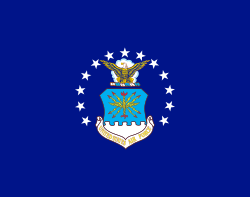Executive One

Executive One er flyvekontroltjenestens officielle kaldesignal på amerikanske civile fly, der befordrer USA's præsident.
Præsident Richard Nixon var med udgangen af 2015 den eneste amerikanske præsident som har rejst på en kommerciel flyvning. Dette skete under energikrisen i 1973 for at "sætte et eksempel for resten af nationen under den nuværende energikrise" og "vise sin tillid til flyselskaberne". Han fløj i et McDonnell Douglas DC-10-fly fra flyselskabet United Airlines på en ordinær ruteflyvning fra Washington Dulles International Airport til Los Angeles International Airport.[1] Eneste bagage præsidenten medbragte var en kuffert med forskellige kommunikationsmidler, så han kunne forblive i kontakt med Det Hvide Hus i tilfælde af en nødsituation. Nixons valg af civilt transportmiddel sparede ikke brændstof, på grund at et Boeing 707 fra 89th Airlift Wing fløj tomt til Californien, så det kunne fragte præsidenten tilbage til Washington D.C. som Air Force One.
Hvis præsidentens familie er ombord på et civilt fly, kan White House Transportation Agency og United States Secret Service vælge at tildele afgangen kaldesignalet Executive One Foxtrot.[2]
Når vicepræsidenten er ombord er kaldesignalet Executive Two.
Se også
Referencer
- ^ "The President Takes to the Friendly Skies". The Washington Post, Times Herald. 1973-12-30. s. C6.
{{cite news}}:|access-date=kræver at|url=også er angivet (hjælp) - ^ Bumiller, Elisabeth (1999-12-03). "Airport Delay Creates a Campaign Dispute". New York Times. The New York Times Company. s. B3. Arkiveret fra originalen 3. marts 2016. Hentet 2. januar 2016.
| ||||||||||||||
Medier brugt på denne side
President Nixon, with edited transcripts of Nixon White House Tape conversations during broadcast of his address to the Nation.
- Access Restrictions: Unrestricted
- Use Restrictions: Unrestricted
- Roll-Frame number: WHPO C1269-20
Image taken from united-states-flag.com. This is a faithful representation of an original U.S. government work. As such, it attracts no new copyright. However, the USMC flag is protected by U.S. Trademark Registration Nos. 4852947 and 4193304, and may not be used commercially without a trademark license from the USMC's Trademark Licensing Office. Originally uploaded to en.wikipedia by Mbr7975; description page is (was) here: Marine corps flag.gif
(c) Zscout370 at engelsk Wikipedia, CC BY-SA 3.0
U.S. Presidential flag, 1960-present. It is defined in Executive Order 10860.
The Service Color of the U.S. Coast Guard. This is not the same as the law enforcement ensign, which features vertical red stripes defaced with the anchor symbol of the USCG.
The Flag of the United States Navy, as defined in Executive Order 10812 of April 24, 1959. The design is described there as:
The flag for the United States Navy is 4 feet 4 inches hoist by 5 feet 6 inches fly, of dark blue material, with yellow fringe, 2½ inches wide. In the center of the flag is a device 3 feet and 1 inch overall consisting of the inner pictorial portion of the seal of the Department of the Navy (with the exception that a continuation of the sea has been substituted for the land area), in its proper colors within a circular yellow rope edging, all 2 feet 6 inches in diameter above a yellow scroll inscribed "UNITED STATES NAVY" in dark blue letters.
The U.S. Navy flag is used for display purposes at ceremonies, parades, and other public functions where the U.S. Navy has an official presence, usually being carried by an honor guard on ceremonial occasions. It is not used for outdoor, fixed (permanent) purposes, and is not flown on Navy ships. Versions without fringe and different dimensions seem to be common, though it appears they are not technically the official U.S. Navy flag, as the executive order has not been amended.
Prior to 1959, the Navy Infantry Battalion flag was used to represent the U.S. Navy.
For more information, see the Navy's flag history page, SeaFlags, Flags of the World, U.S. Navy document NTP 13(B) [1], section 1710, and Navy regulation OPNAVINST 10520.1 (which replaced a similar SECNAVINST 10520.2D regulation from 1974).Det er let at give dette billede en kant







